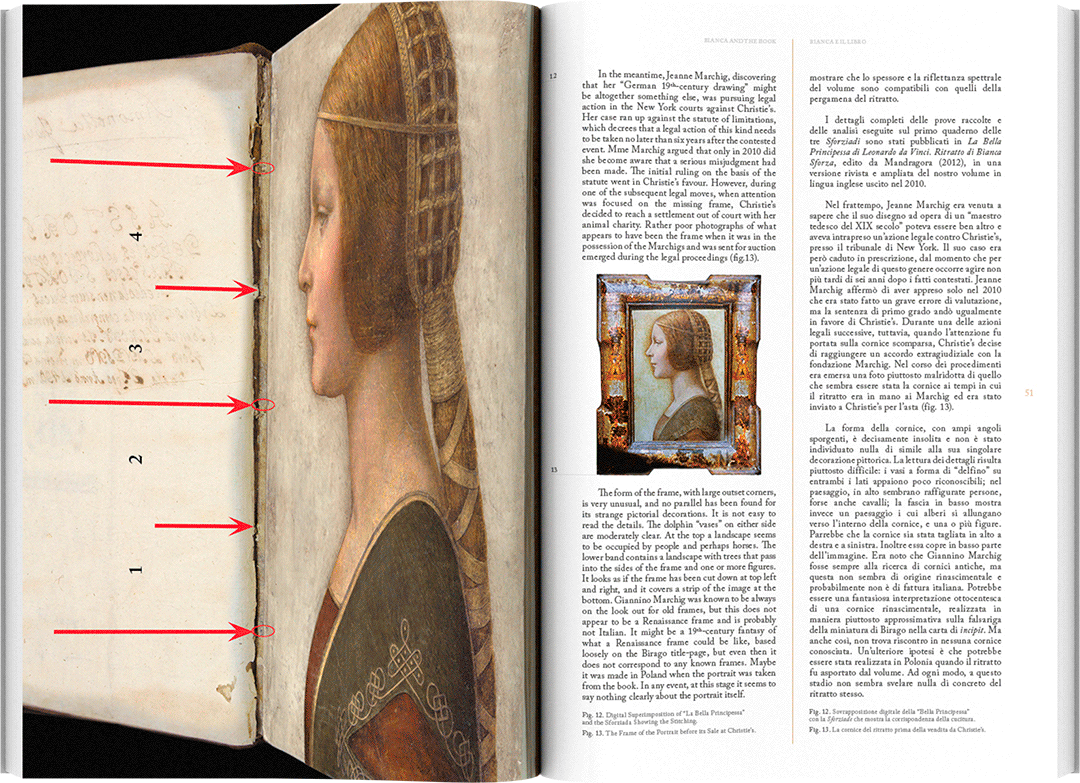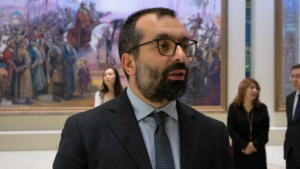ASTANA — Leonardo da Vinci’s “La Bella Principessa” made its historic debut in Astana, marking an invaluable cultural moment for Central Asia on June 7. General Director and Founder of Scripta Maneant publishing house, Giorgio Armaroli and Scripta Maneant Foreign Rights Sales Officer, Francesco Iori discussed why this Renaissance masterpiece was chosen for display, its history and cultural significance for the two countries in an interview for this story.

La Bella Principessa book spread. Photo credit: Scripta Maneant
It should be noted that the project, promoted by the Italian Embassy in Astana and curated by Scripta Maneant, was realized due to the support of ForteBank, Mastercard, the Italian Culture Institute and the Kazakh Ministry of Culture and Information.
“Culture promotion is a powerful driver of dialogue and foreign policy,” Ambassador of Italy Marco Alberti told The Astana Times. “This unique initiative is a great dream come true thanks to a great cooperation between Italy and Kazakhstan.”
According to Iori, Leonardo da Vinci’s La Bella Principessa stands out among his works due to its unique medium and technique. Unlike most of his paintings, which were done on canvas or wood, this piece is realized on vellum using chalks and ink.

Scripta Maneant Foreign Rights Sales Officer, Francesco Iori. Photo Credit: Qazmonitor / Adelina Kulyashkina
“Less than 20 of Leonardo’s paintings exist worldwide, and very few are owned by private collectors. La Bella Principessa is one of these rare works,” he added.
The painting has been publicly exhibited only five times before, making the Astana exposition its first in Central Asia. Previous exhibitions took place in the Italian cities of Urbino and Monza, Nanjing, China and Lugano, Switzerland.
According to Armaroli, the decision to bring the painting to Kazakhstan was influenced by the strong cultural ties between Italy and Kazakhstan and the collaboration with the government. It took six months of effort to make this exhibition possible.
“There are very few suppliers available for this project worldwide. A specialized transportation company handles the movement of masterpieces, which travel in secure, climate-controlled cases. A restorer always accompanies the artwork to ensure its condition is maintained throughout the journey. This restorer conducts a condition report at the start when the artwork leaves its secure condition and upon arrival at the museum,” explained Iori.
The exhibition incorporated digital elements to attract and engage new generations, including a large LED wall and a 360-degree room with six video projectors.
“These new technologies should help attract young generations to the museum,” said Iori.
La Bella Principessa’s early history and attribution to Leonardo da Vinci

General Director and Founder of Scripta Maneant publishing house, Giorgio Armaroli. Photo credit: We Project
In 1998, the widow of a Swiss restorer who lived in Florence sold a previously unknown female portrait in profile at the auction. The auction house determined the author as a German master of the early 19th century. The work was sold for $20,000 to an art collector, who later contributed to La Bella Principessa’s attribution to Leonardo da Vinci.
Scripta Maneant publishing house was the first to write about La Bella Principessa in the book about Leonardo in 2008. It includes the first studies on these artworks and their attribution.
“As Professor Kemp explains in the videos displayed at the National Museum of Kazakhstan, he received pictures of the artwork from the owner, who sought feedback on a possible attribution to Leonardo da Vinci or another master,” said Iori.
According to Iori, they enlisted official experts to study the artwork and confirm the attribution to comply with Italian laws.
“The Italian Ministry of Art has confirmed it because every time you move the artwork, you must declare its origin and attribution,” added Armaroli.
Inestimable masterpieces of Leonardo da Vinci
When asked if La Bella Principessa has a price value, Iori noted that it is complicated to give precise value to masterpieces by Leonardo da Vinci.
“For example, Salvador Mundim was sold for $450 million. In the case of La Bella Principessa, the artwork is more complex, has been studied more extensively and has been better conserved than Salvador Mundi,” said Iori.
He emphasized that there is an enormous difference between Leonardo da Vinci’s two works. La Bella Principessa has been examined in depth, resulting in many books and studies.
“The quality and conservation of La Bella Principessa are superior, making it a better-preserved piece, which increases its value. It is insured at 160 million euros for the exposition in Astana,” he added.
Kazakhstan – Italy art collaboration
According to experts, La Bella Principessa in Kazakhstan is unique in its scope between Kazakhstan and Italy but may pave the way for similar initiatives in the future.
“We have already initiated discussions with companies and institutions in Kazakhstan that show interest in collaborating on similar projects,” said Iori.
“I have visited the National Museum in Kazakhstan, which is quite fascinating. There is an interest in developing projects involving local artists exploring new artistic approaches. Kazakhstan has also made a notable presence at events like the Venice Biennale. I think something interesting about modern art will be developed in the future,” he added.


